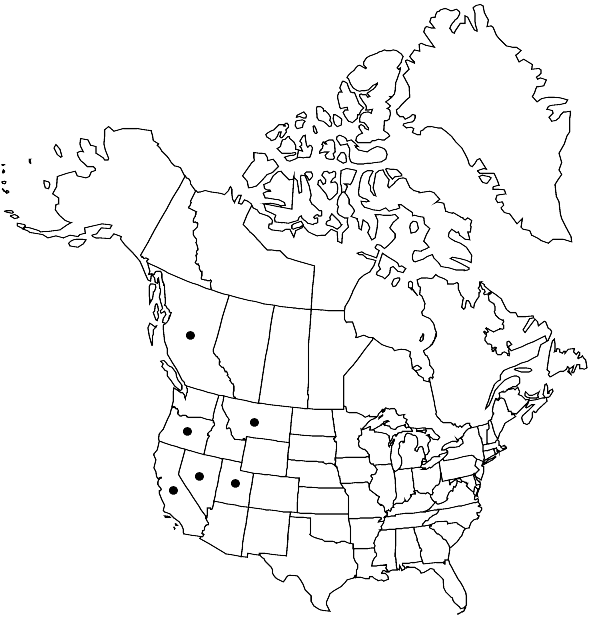Didymodon nicholsonii
Rev. Bryol. 34: 100, figs. 1–9. 1907 (as nicholsoni),.
Plants green to dark green, usually with a reddish cast. Stems to 2 cm, central strand present. Stem leaves appressed to weakly spreading when dry, spreading and not keeled when moist, monomorphic, long-ovate or occasionally ovate-lanceolate, rarely lanceolate, grooved adaxially along the costa, especially near leaf apex, to 3.5 mm, base scarcely differentiated to ovate or oblong in shape, margins narrowly recurved in proximal 3/4 of leaf, entire, apex acute to blunt, not fragile; costa percurrent or ending before the apex, not strongly spurred, not much widened or tapering, lacking an adaxial pad of cells, adaxial costal cells quadrate to short-rectangular, ca. 6 cells wide at mid leaf, guide cells in 1(–2) layers; basal laminal cells very weakly differentiated medially, walls thin to weakly thickened, quadrate to short-rectangular, not perforated; distal laminal cells 7–9 µm wide, 1:1, nearly smooth or papillae simple or 2-fid, 2–3 per lumen, lumens rounded-quadrate, walls thickened, weakly convex on both sides of lamina, 2-stratose in distal leaf half or occasionally only in patches or very rarely 1-stratose, cells of distal leaf margins 2-stratose or occasionally entire leaf 2-stratose distally. Specialized asexual reproduction absent. Seta ca. 1.2 cm. Capsule 1.5–2.1 mm; peristome teeth 32, linear, twisted 1/2 times to once, to 1000 µm. Spores 11–13 µm. Distal laminal KOH reaction light to dark red-brown, occasionally deep red-orange.
Phenology: Capsules mature spring–summer.
Habitat: Wet rocks, quartzite, wet silty sand, stream bank, canyon walls, streamside, chaparral
Elevation: low to high elevations (50-1900 m)
Distribution

B.C., Calif., Mont., Nev., Oreg., Utah, Europe, Asia (Afghanistan).
Discussion
Didymodon nicholsonii intergrades somewhat with D. vinealis but the ovate-lanceolate leaves are distinctive as is the tendency to a partially or completely 2-stratose distal lamina. It may be confused with D. rigidulus but has a broader leaf apex, the costa commonly ending before the apex, a deep apical groove over the costa, and 2-stratose distal marginal cells often in a narrow band. The western species Grimmia cinclidontea Müller Hal. is similar and grows in similar habitats, but is autoicous, has smooth leaf cells and a homogeneous costal section. S. Flowers’s (1973) illustration of D. rigidulus is actually of D. nicholsonii.
Selected References
None.